The best way to bake chicken breasts is with your convection oven, but you can bake them in any type of oven. Your dinner will be ready in about 30 minutes and will be healthy, moist, and tender every time. Quick and easy with just a few easy secrets any home cook can master.
🐓Ingredinents
Chicken—boneless skinless chicken breasts
Butter
Seasoning—paprika, garlic powder, kosher salt, black pepper
Optional brine—water and salt
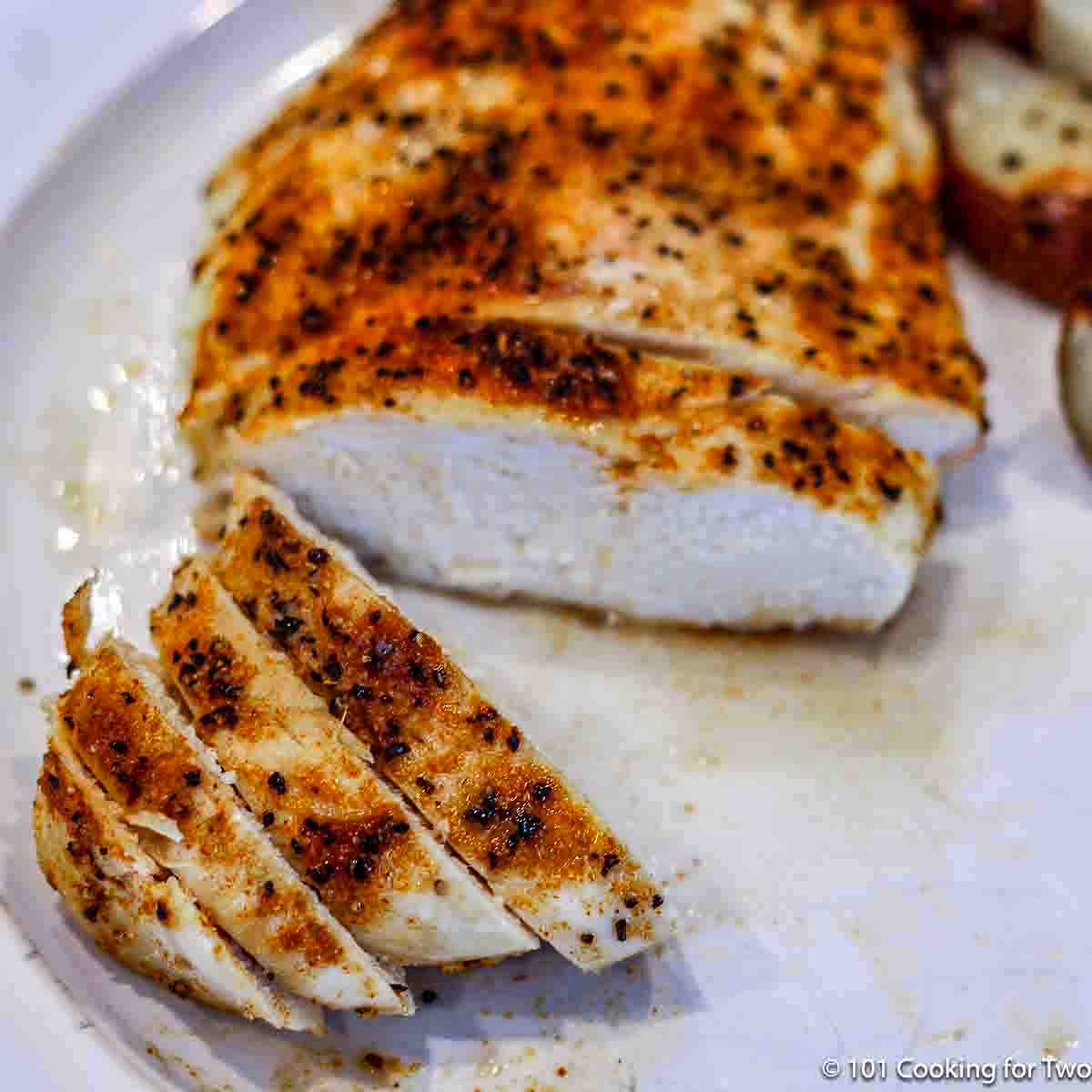
Jump To (scroll for more)
- 🐓Ingredinents
- The Three Secrets to Get It Right Every Time!
- How to Cook Chicken Breasts in a Convection Oven—Step-by-Step
- ⏰How long to bake chicken breasts in a convection oven
- Tips to get it right every time
- 🧂Seasoning tips
- Boneless Skinless Chicken Breast Recipes
- Can I use chicken thighs or other chicken?
- How to adjust the thickness of chicken breasts
- How to brine chicken breasts
- How to Serve
- Storage of cooked chicken breasts
- FAQs
- Chicken Food Safety
- 📖 Recipe

Featured Comment from shirl:
5 stars. Hi Dan, I followed your recipe and cooked the best chicken breasts ever!
Cooked right, your chicken breasts will be juicy, tender, and favorable—a new family favorite. Cooked wrong, and we are taking dry, rubbery, and tasteless—I call that a hockey puck.
It is time to get back to some basics with healthy, boneless skinless chicken breasts; you love them but hate to cook them. That ends now with these fast and easy, detailed step-by-step photo instructions that are adaptable to your taste.
The Three Secrets to Get It Right Every Time!
Follow these rules for safe, moist, and tender chicken breasts.
- Even out the thickness of the meat.
- Use an instant-read thermometer to cook to exactly 165°.
- Rest after cooking for at least 5 minutes.
How to Cook Chicken Breasts in a Convection Oven—Step-by-Step

1. Preheat the oven to 400° convection or 425° conventional.
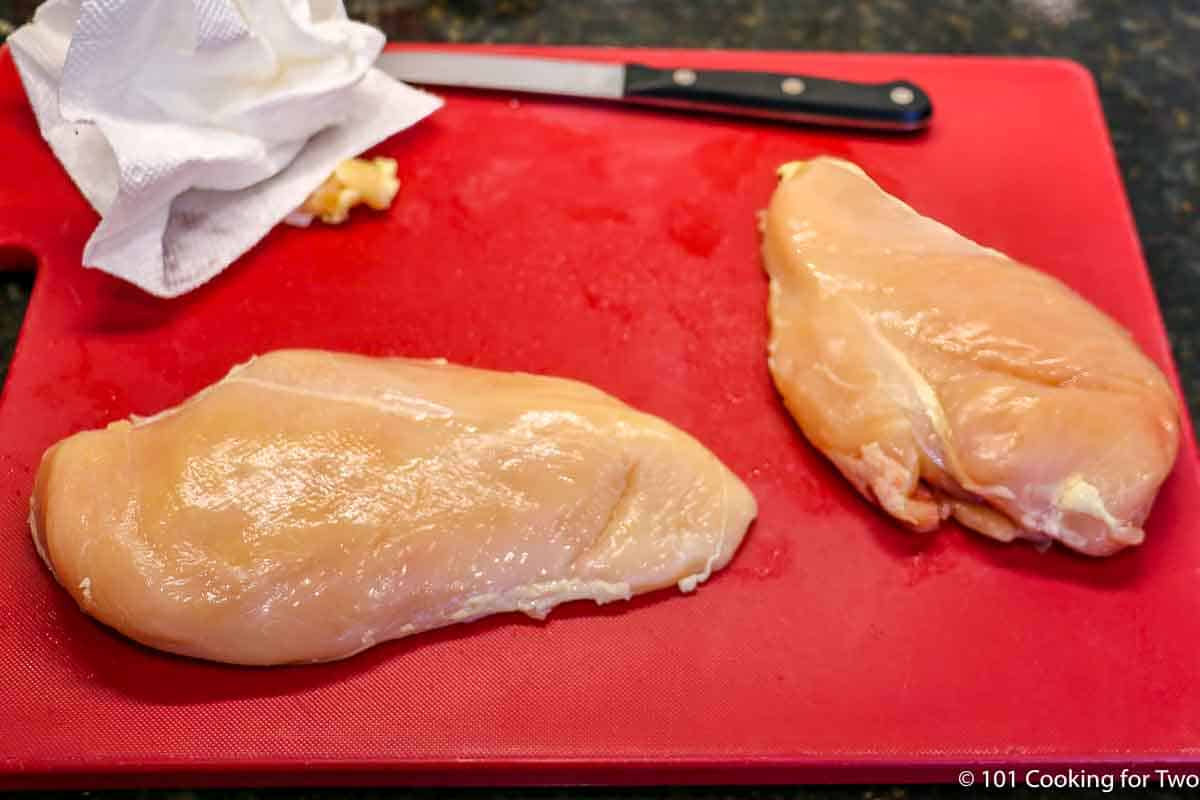
2. Trim 2 boneless skinless chicken breasts of trimmable fat.
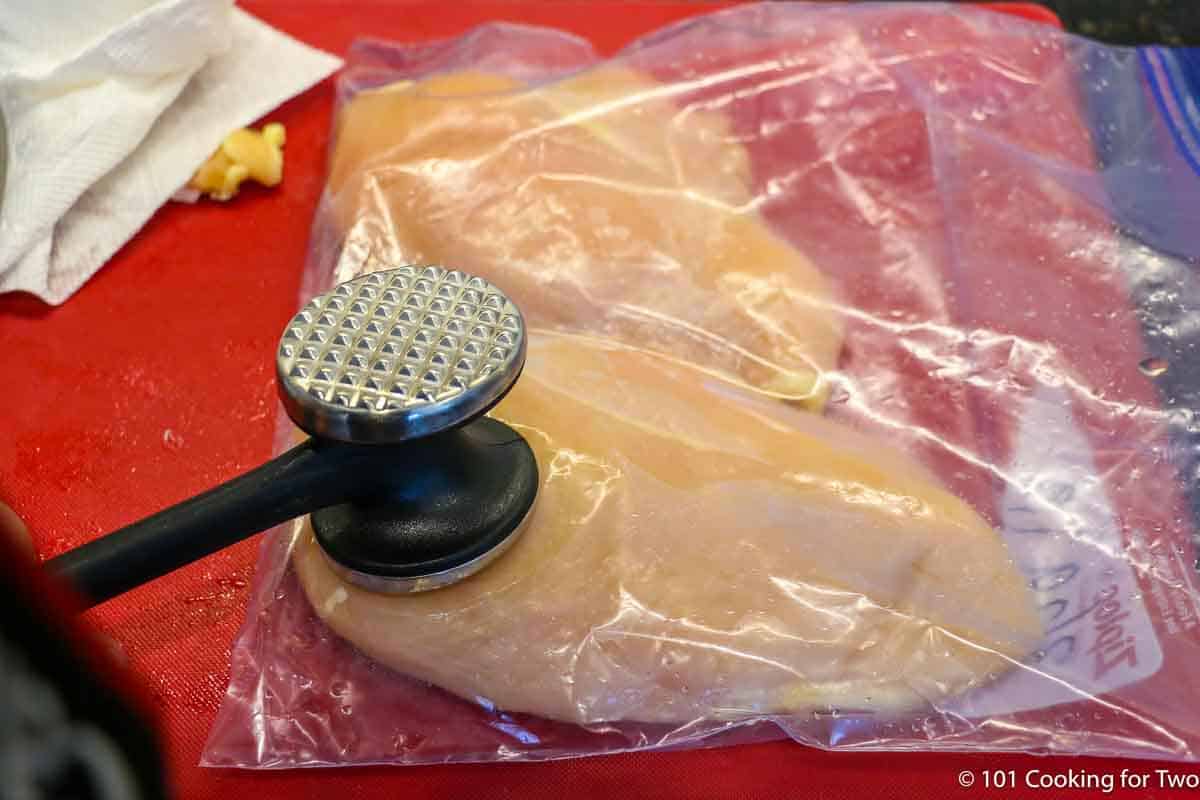
3. If thick—thin to about ¾ inches thick with a meat mallet or heavy pan.
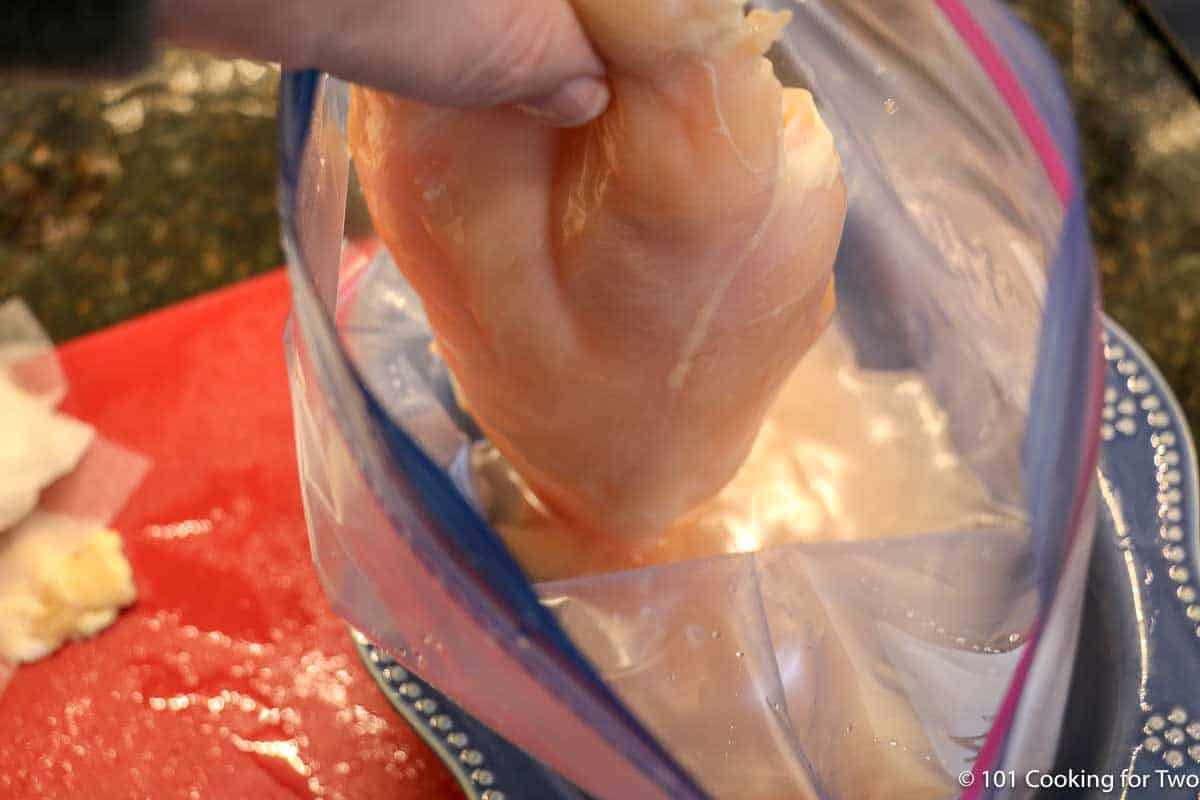
4. Optional brine if you wish.
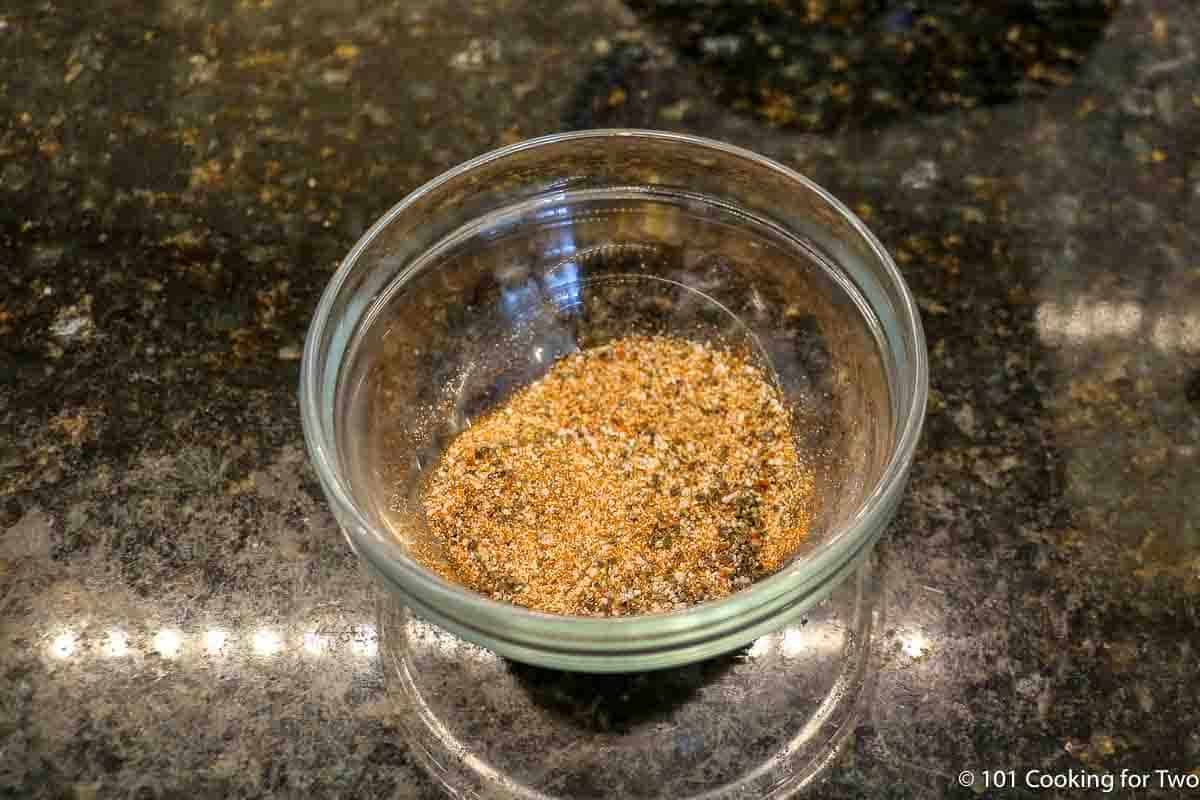
5. Mix seasoning of kosher salt, black pepper garlic powder, and paprika. Or use seasoning of your choice.
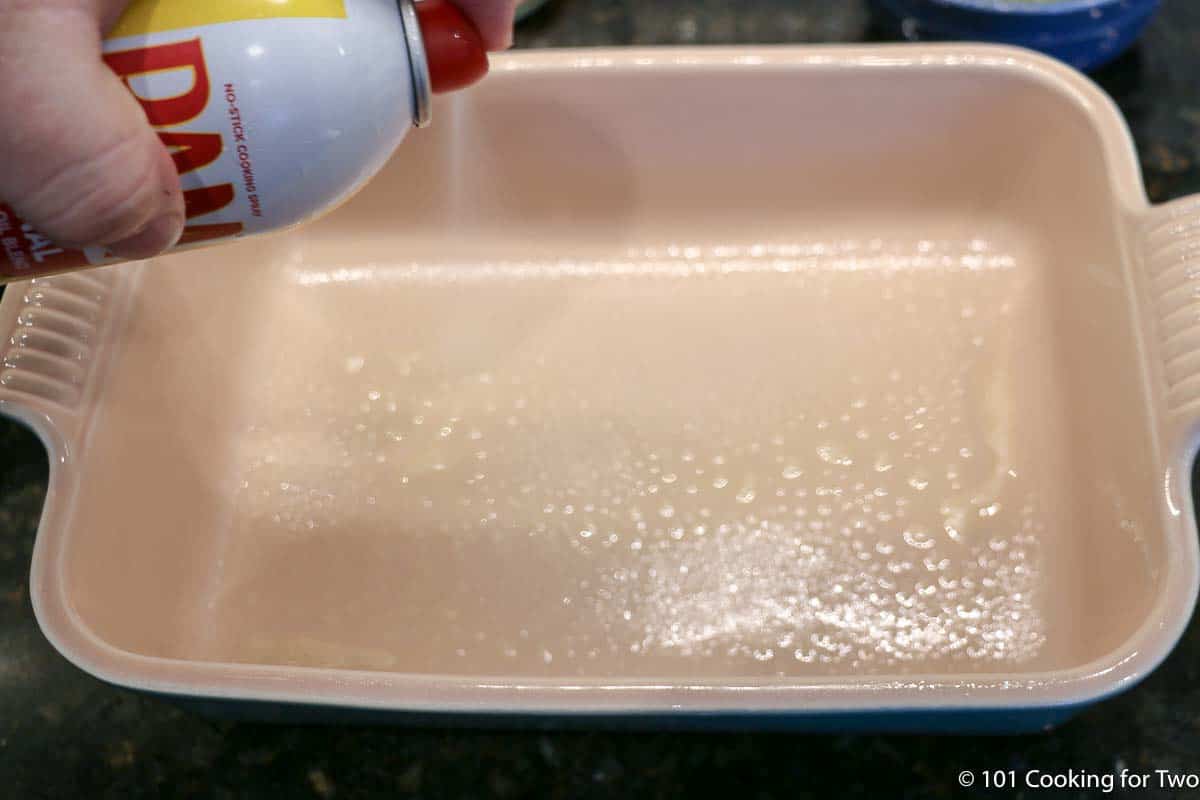
6. Prep a small baking dish with a spray of PAM. Use a rack if you have one.
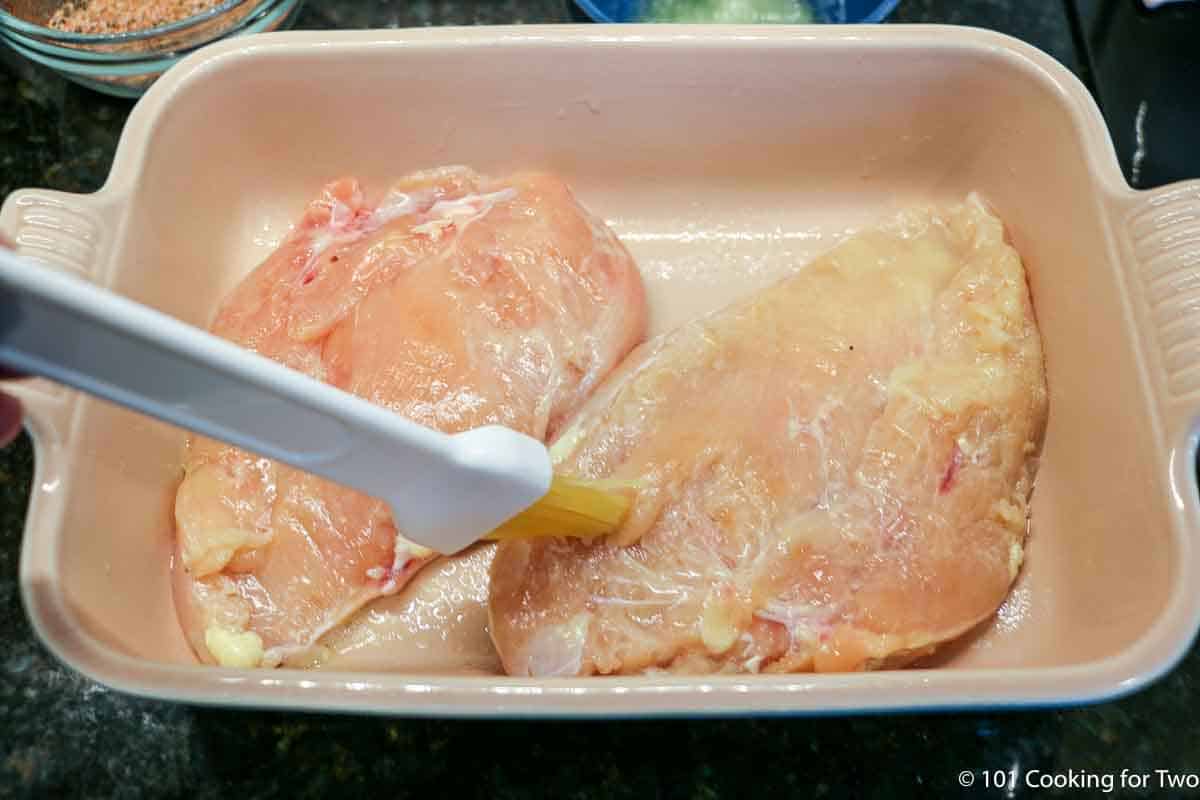
7. Pat dry the chicken and brush with melted butter and season to taste.
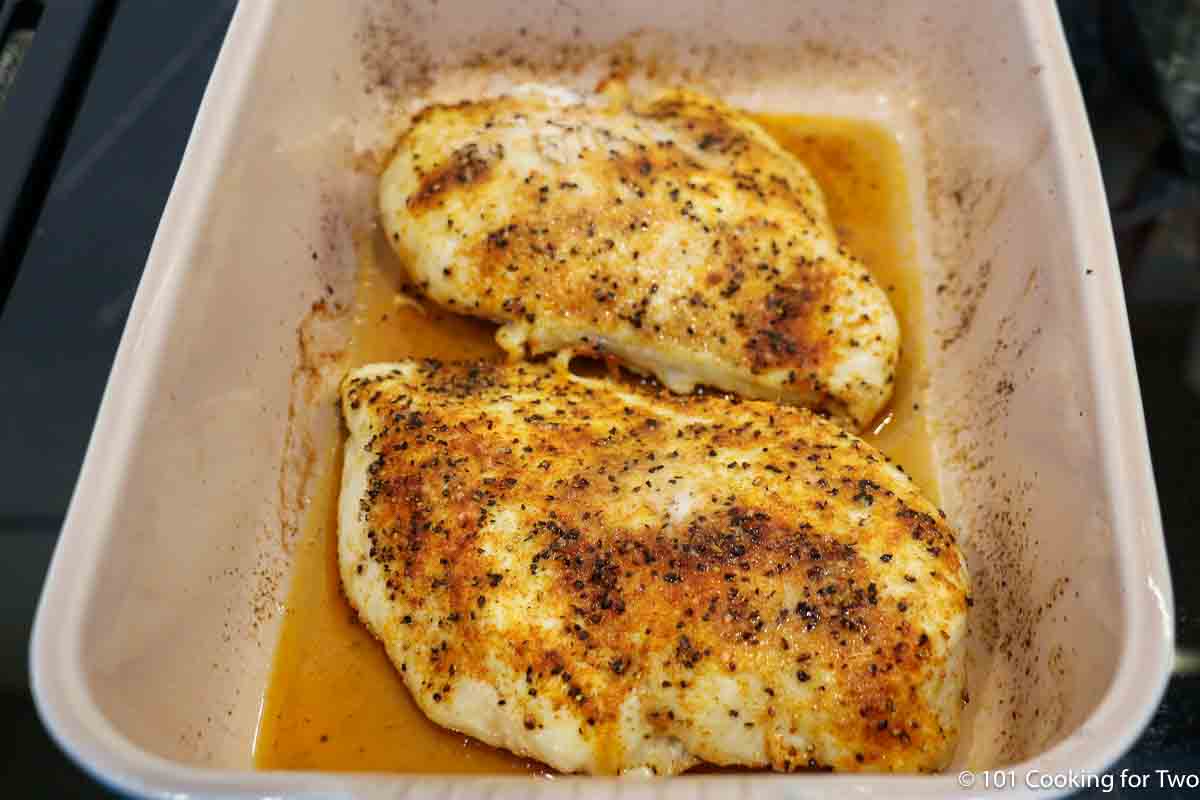
8. Bake to 165°—about 23-26 minutes.
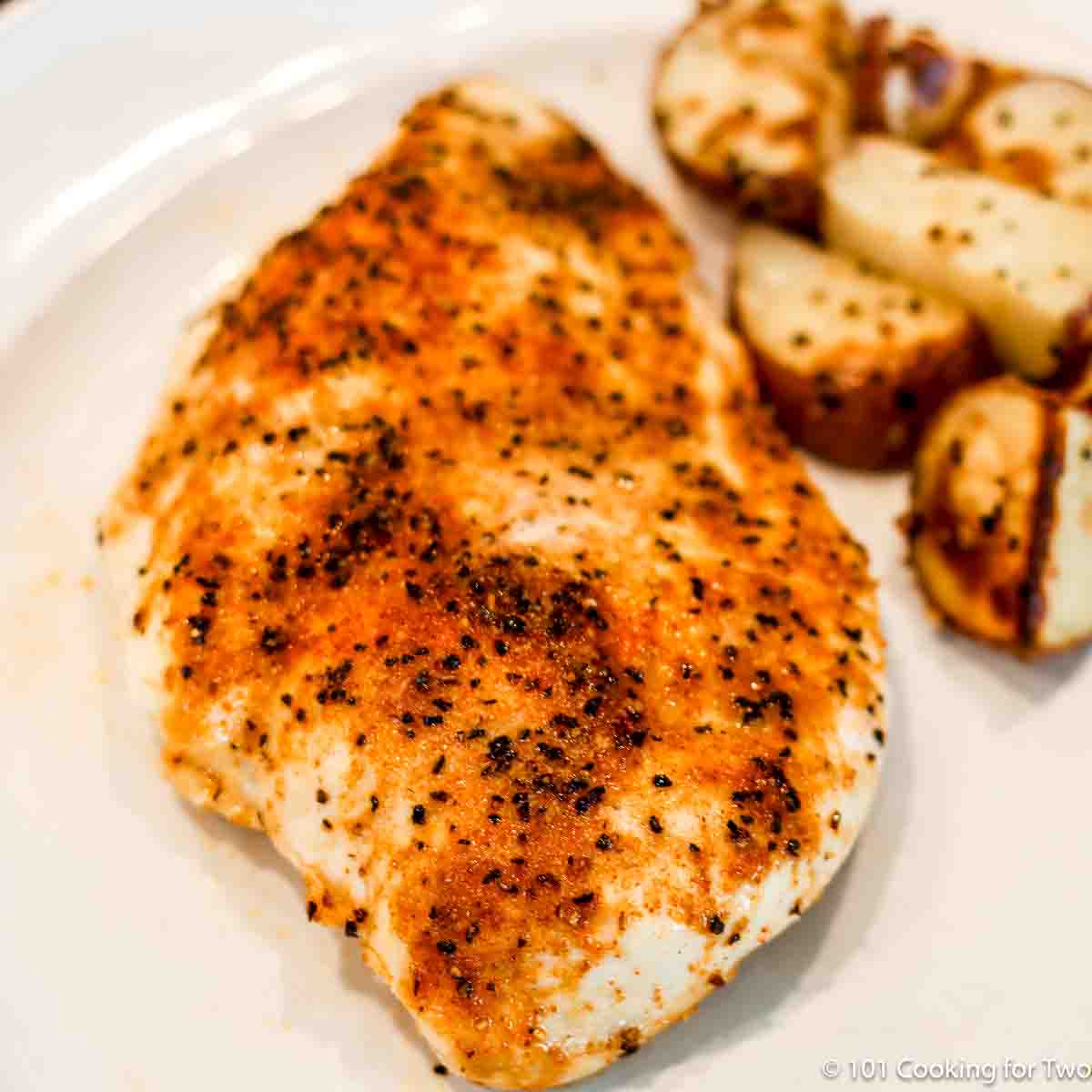
9. Allow to rest for 5 minutes before serving.
For more details, keep reading. See the Recipe Card below for complete instructions and to print.
⏰How long to bake chicken breasts in a convection oven
A 10-12 oz chicken breast will take about 23 to 26 minutes at 400° convection (425°conventional).
- In a 425° convection oven, baking time will be about 20-23 minutes.
- In a 400° convection or 425° conventional oven, baking time will be 23-26 minutes.
- In a 375° convection or 400° conventional oven, the baking time will be about 26-30 minutes.
- In a 350° convection or 375° conventional oven, the baking time will be about 30-35 minutes.
Times are provided to help in planning only. I suggest 400° or 425° convection. Cook to the final internal temperature of 165° in the thickest part. Please check a few minutes early.
A convection oven will cook quicker, help seal the outside, and keep the meat moist. But a conventional oven may be used with minimal difference. Other ovens, like a toaster oven or air fryer, will also work.
An instant-read or other meat thermometer must be used for safety and best results. There are too many variables to cook by time or color. Cooking too long will dry out the chicken. Too short will be dangerous.
Tips to get it right every time
Try to cook fresh chicken breasts of about the same size. Previously frozen chicken tends to be drier and will benefit from brining. Cooking breasts about the same size will help get easier, consistent results.
Be sure to flatten the chicken if over ¾ inch thick to even out the cooking and help get to a safe internal temp while not overcooking the surface.
Use an instant-read thermometer to prevent overcooking, but reach a safe 165° internal temperature. Without it, you are cooking blind.
Be sure to rest the cooked chicken for at least 5 minutes before cutting so the moisture that is driven out of the cells during cooking has some time to reabsorb back into the cells for moist and tender results.
🧂Seasoning tips
- Start with a brush of melted butter or olive oil.
- The choices of spices are wide open. I suggest a good sprinkle of paprika, garlic powder, salt, and pepper. The salt should be eliminated if the breasts are brined.
- Two other options I like, both with salt in them, are my All Purpose Seasoning - 7:2:1 and 7:2:2 or just a good sprinkle of a seasoning salt like Lowry and a bit of pepper.
- Thyme, oregano, or onion powder can be added if you wish.
- Add some spiciness by switching out paprika for chili powder, or add a pinch of cayenne pepper.
- Try Italian seasoning, BBQ rub, Chipotle Seasoning, or Black Magic Seasoning.
- Some people like to add sugar to their seasoning to get more caramelization and browning.
Boneless Skinless Chicken Breast Recipes
Try Pan Seared Oven Baked Chicken Breast, which adds some nice sear flavor with a cast iron skillet for a fast, easy dinner.
For a fancy dinner, serve Baked Parmesan Crusted Chicken, Crispy Oven Fried Chicken, or Melt in Your Mouth Chicken. Or take it to the grill with How to Grill Chicken Breasts.
Can I use chicken thighs or other chicken?
This recipe is specifically for boneless skinless chicken breasts, but boneless skinless chicken thighs may be used if cooked to 180°-185° for tenderness.
But this is not how to cook bone-in, skin-on, or breaded chicken. For other roasted chicken recipes, try baked chicken drumsticks, roasted split chicken breasts, whole chicken, and chicken tenders.
For grilled or fried chicken recipes, check the wide variety in the Recipe Index.
How to adjust the thickness of chicken breasts
We need to adjust the thickness so all the breasts you are cooking are about the same. Try to get them to about ¾ inch thick. Don't measure, don't obsess, just thin the thickest part.
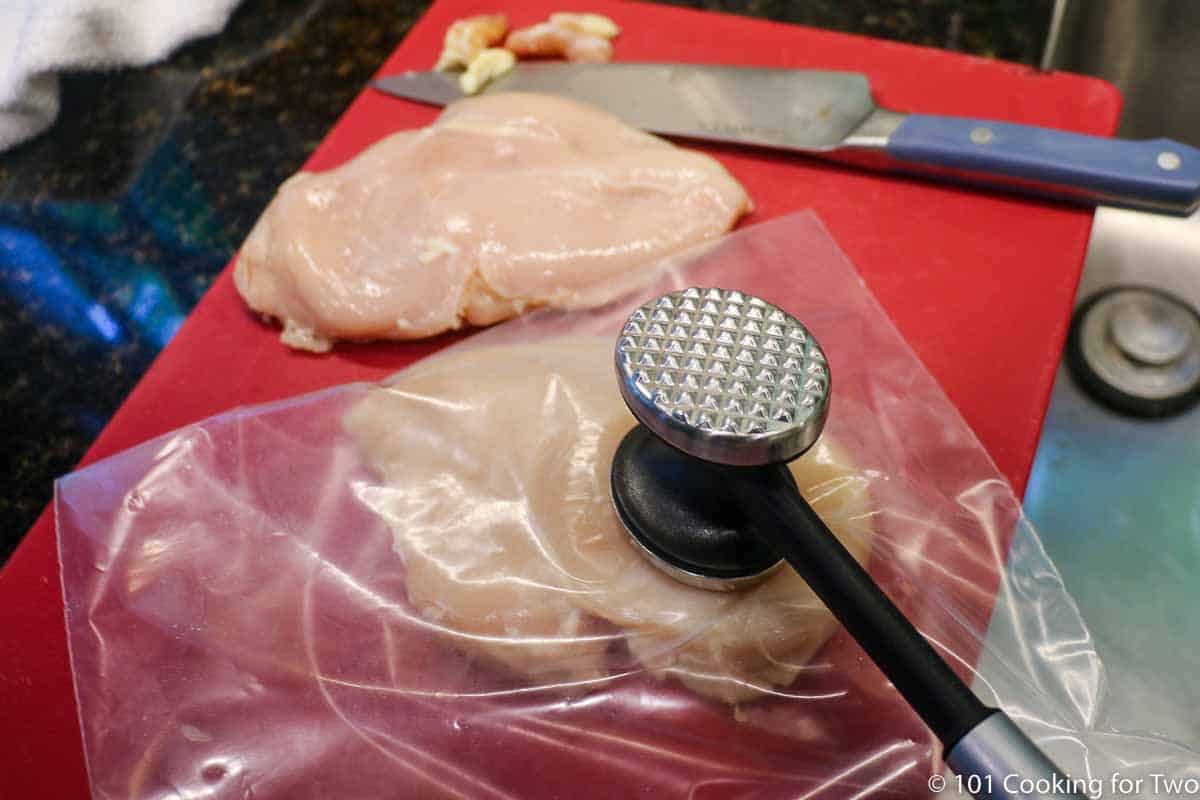
Use a 1-gallon zip-lock bag to prevent splatter, but plastic wrap will do. Do not just pound the chicken without protecting yourself and the area from spattering (a significant health hazard). You should assume that any chicken is contaminated with salmonella.
Use a meat mallet, but you can use the bottom of a pan if you don’t have one.
How to brine chicken breasts
Brining will improve the moisture and texture of any chicken. So if you have time, it is always a good idea. Brining is more important if you are dealing with previously frozen chicken, which can lose some moisture.
The ratio for a brine is 2 cups of water and 1 tablespoon of table salt. Some people will add some brown sugar equal to the salt. Remember that all salts are not identical, and 1 teaspoon table salt = 1 ½ teaspoons Morton kosher salt = 2 teaspoons Diamond Crystal kosher salt.
As little as 15 minutes makes a big difference. But you can brine for up to 2 hours if you want. This is a "heavy brine" in the amount of salt and matches the Cooks Illustrated suggestions. You may see longer brine times suggested, but please limit it to 2 hours maximum.
How to Serve
For a complete meal, serve with potatoes like Oven Roasted Baby Potatoes or Parmesan Baked Potatoes. Add a hot vegetable like Roasted Asparagus or Baked Green Beans with Bacon. Add some Dinner Rolls and finish with an Apple Crumb Pie or Berry Crisp.
Storage of cooked chicken breasts
Leftovers may be stored by sealing in an airtight container and refrigerated for 4 days or frozen for 4 months.
I frequently buy a large package of chicken breast, cook the extras, and shred and freeze it for later use, like crock pot chicken chili or a broccoli chicken casserole.
FAQs
Almost any tray with sides or shallow baking pan or dish will work. It needs to be big enough to leave some space between the breasts and not "crowd the pan."
I like to place chicken breasts on a rack to get the breasts up and out of any moisture. I also like to use a good spray of PAM on the pan and some aluminum foil or parchment paper to cover the bottom of the pan to help clean up.
No, bake open to the high temperature of the oven.
Yes, but that may cut the cooking time and over-brown the surface. But this is variable by your oven.
The difference between convection bake and convection roast will vary by the oven's brand. However, bake will usually heat with the bottom oven element, and roast will use the broiling element.
Chicken Food Safety
Raw chicken and other poultry should be considered contaminated and handled with care. Wash your hands carefully before and after touching raw chicken.
We do NOT wash raw chicken routinely due to water splatter. See Chicken... To Rinse or Not To Rinse? for more information.
You must cook chicken to an internal temperature of 165° for safety—see the USDA for more information. You need to check this with an instant-read thermometer.
Most recipes contain estimated times for cooking (including this recipe). They are provided for planning purposes. You can not cook safely by time—you must use a thermometer.

This recipe is listed in these categories. See them for more similar recipes.
Have you tried this recipe, or have a question? Join the community discussion in the comments.
📖 Recipe
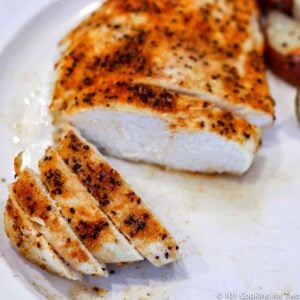
How to Bake Chicken Breasts in a Convection Oven
Video Slideshow
Ingredients
- 2 Chicken Breasts - boneless skinless
- 1 tablespoon butter
Optional Brine
- 2 cups water
- 1 tablespoon table salt
Suggested Seasoning—Use what you want
- ½ teaspoon kosher salt - Skip salt if you brined
- ¼ teaspoon pepper
- ½ teaspoon garlic powder
- ½ teaspoon paprika
Instructions
- Preheat the oven to 400° convection or 425° conventional.
- Trim 2 boneless skinless chicken breasts of trimmable fat.
- If thick—place the chicken in a ziplock bag and flatten the breasts to about ¾ inches thick with a meat mallet or heavy pan.
- Optional brine: mix 2 cups of water with 2 tablespoons of table salt. 15 minutes will give some results—2-hour maximum. Be sure to rinse off the brine before proceeding.
- Mix seasoning of ½ teaspoon each of kosher salt, garlic powder, and paprika, plus ¼ teaspoon black pepper. Leave out the salt if using a brine. You may use any seasoning you want.
- Prep a small baking dish with a spray of PAM. Use a rack if you have one.
- Pat dry the chicken. Melt 1 tablespoon of butter in the microwave and brush both sides of the chicken. Apply your seasoning to your taste.
- Bake in the preheated oven. It will take about 23-26 minutes and is done when the internal temperature is 165° in the thickest part of the breasts. Check the chicken temperature 4-5 minutes early to avoid overcooking.
- Allow to rest for 5 minutes before serving.
Want to save this recipe for later?
Recipe Notes
Pro Tips
- The brine is optional but always a good idea, especially if the breasts have been previously frozen. Remember that all salt is not equal and 1 teaspoon table salt = 1 ½ teaspoon Morton kosher salt = 2 teaspoons Diamond Crystal kosher salt.
- If using frozen breasts, they must be fully thawed before starting.
- If you brine, be sure to rinse off the brine, and do not use any seasoning with salt.
- Flatten the chicken to about ¾ inch thick: the more consistent the thickness, the more even the cooking and better results.
- To save time, you can use a seasoning salt like Lowry with some pepper for the seasoning if you didn't brine.
- The time estimate is provided only for planning purposes. The thicker or bigger breasts may take longer, and smaller or thinner take less time. There are other variables also, so stay alert.
- Do not overcook, it will lead to drying and poor texture. Do not undercook due to safety.
- You can not get this right without using a thermometer.
- Be sure to let the chicken rest for 5 minutes before serving.
- Good in the refrigerator for 4 days and frozen for 4 months.
- A great recipe to scale up or down for your needs.
Your Own Private Notes
To adjust the recipe size:
You may adjust the number of servings in this recipe card under servings. This does the math for the ingredients for you. BUT it does NOT adjust the text of the instructions. So you need to do that yourself.
Nutrition Estimate
© 101 Cooking for Two, LLC. All content and photographs are copyright protected by us or our vendors. While we appreciate your sharing our recipes, please realize copying, pasting, or duplicating full recipes to any social media, website, or electronic/printed media is strictly prohibited and a violation of our copyrights.
Originally Published April 16, 2019. Updated with expanded options, refreshed photos, and a table of contents to help navigation.
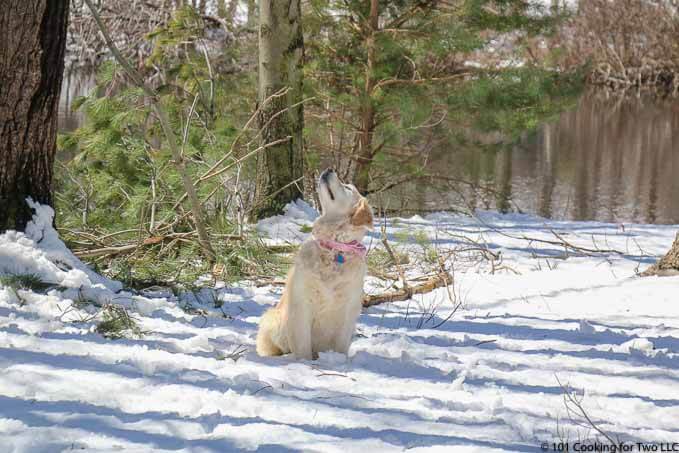


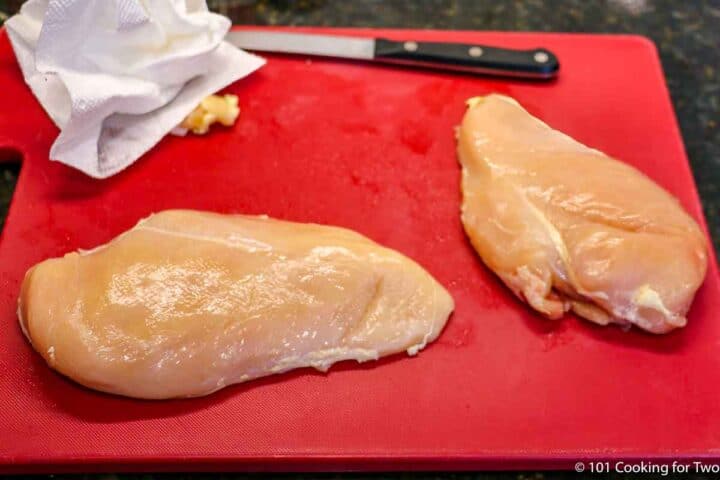
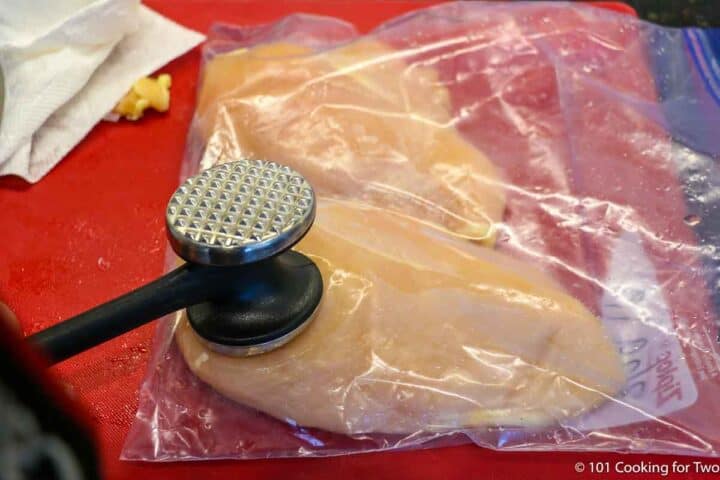
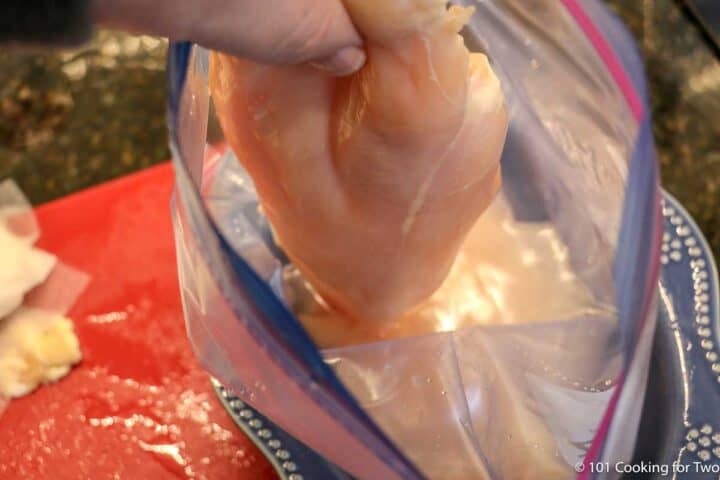
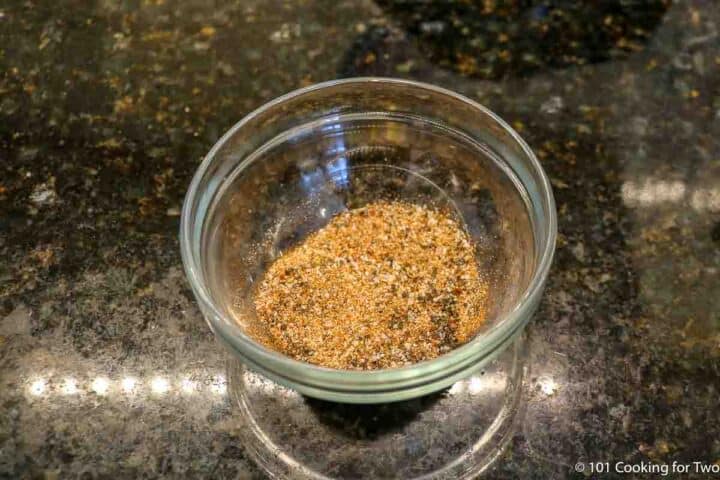
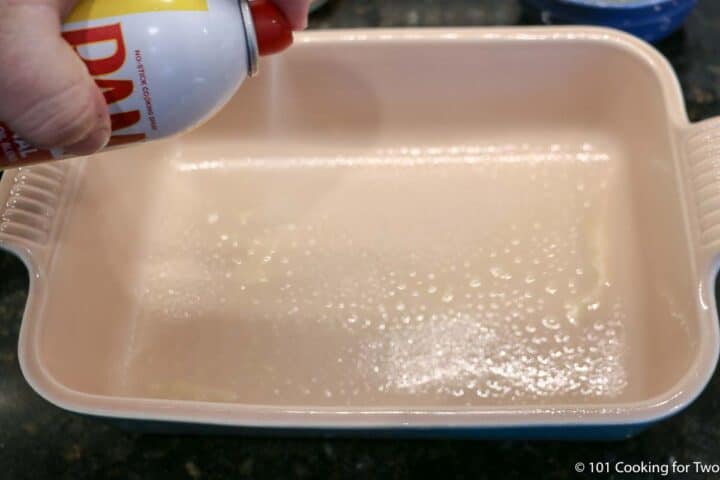
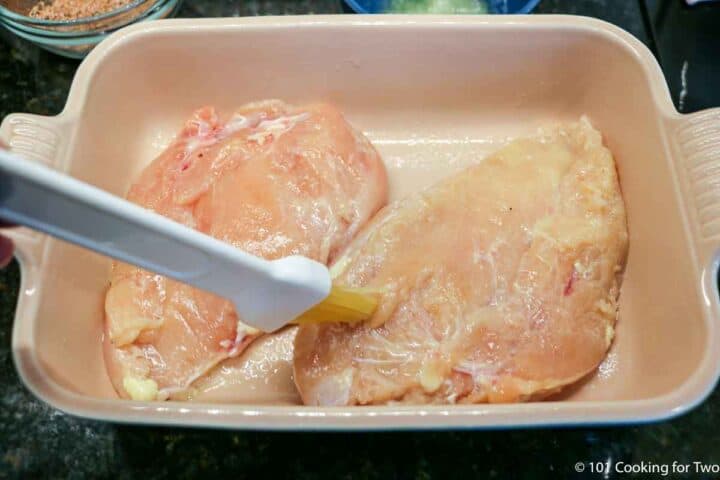
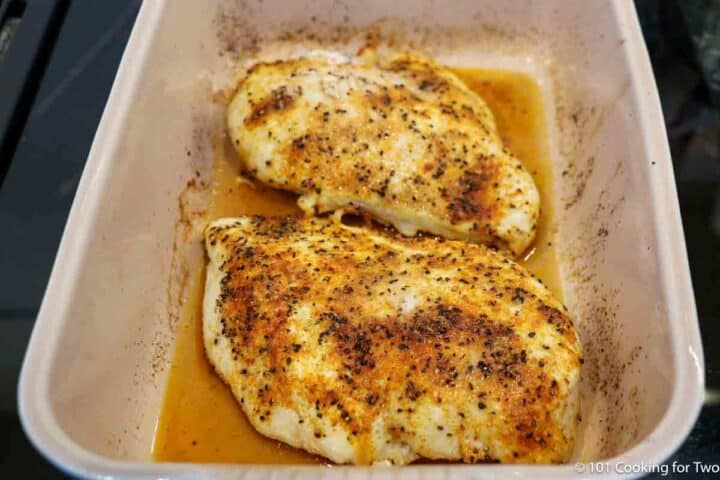
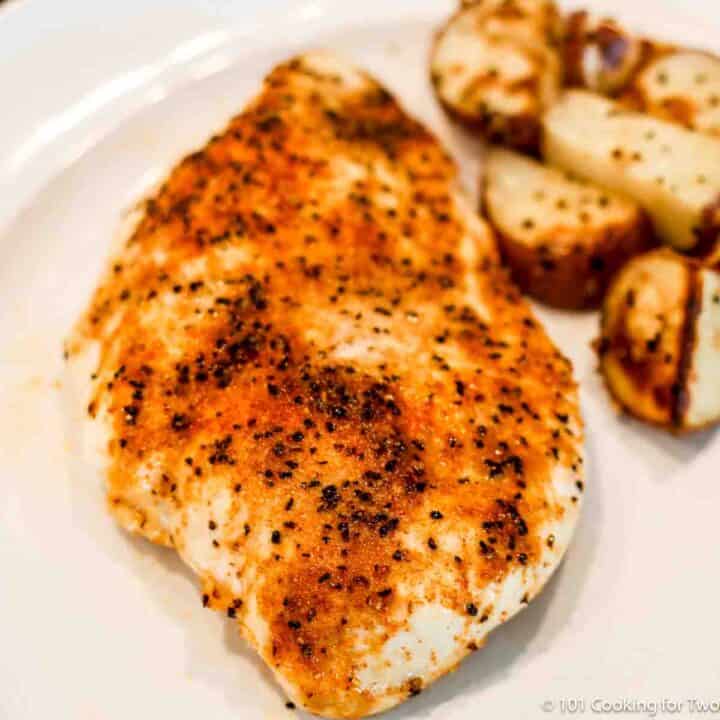
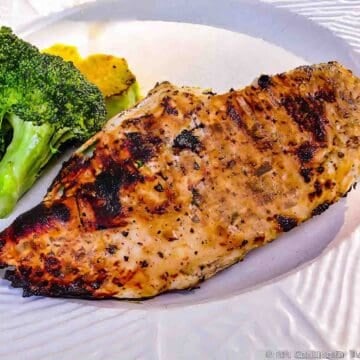
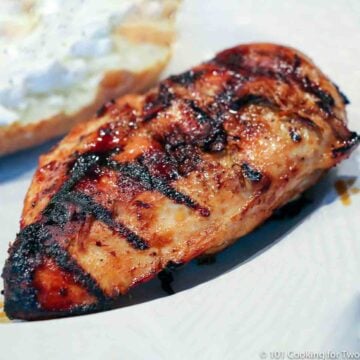
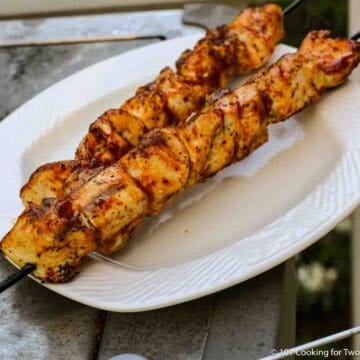
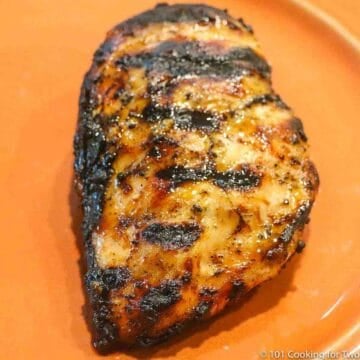
Rebecca says
Thank you for this excellent recipe on cooking boneless skinless chicken breast. Well spoken & so informative. Trying it now & will study about brining for next time.
Blessings. Rebecca
Dan Mikesell AKA DrDan says
Hi Rebecca,
Welcome to the blog. Glad you enjoyed the post and recipe. When you come back, it will look a bit different. It is on the list for a rewrite BUT the recipe will be the same and all the information will still be here but hopefully organized for easier use and some of my "bah-bah" discussion may be gone.
Thanks again for the note and rating.
Dan
Jack says
Thanks. I’ll try it.
Dan Mikesell AKA DrDan says
Hi Jack,
Welcome to the blog and thanks for the note.
Dan
Milt says
Hey, thanks for the great information!
I have an Oster countertop oven and I haven't been able to figure out what the difference is between air frying and convection...
Dan Mikesell AKA DrDan says
Hi Milt,
Thanks for the note, but I will not be much help. Most "air fryers" are mini convection ovens and generally will cook about like a normal convection oven. But I stay away from the countertop oven things, not that they are bad, but every model seems different with lots of different and confusing settings to me.
So read the manual, and check their site, but I suspect they are very similar. I will say that as long as you cook to a final internal temperature, it will almost always be good.
Dan
Mary Heaven says
I was looking for a new-to-us chicken breast recipe - found yours, read thru it and decided to give it a try! So good...nothing worse than dried out chicken and this was most assuredly not! I
Will make this again - no changes to your given recipe!
sue says
lovely recipe scranned on this the kids loved it xxx
Shawna says
I am making these tonight. They sound delicious. The only problem I have is that you mention it once ,somewhere NOT TO COOK CHICKEN TO 165.They will definitely be overcooked while resting.!! . The note should be in BIG BOLD WRITING. Just my opinion. I'll let you know how they come out
joni says
What kind of pan in oven can I use we only have a few kinds want to broil are chicken breast
Dan Mikesell AKA DrDan says
Hi Joni,
Welcome to the blog.
Any oven-safe pan will be fine. Just cook at the right oven temperature and watch the internal temperature and cook to 165°.
This is not a broiler recipe, and I don't recommend broiling since the surface of the chicken will overcook and dry out before you reach a safe internal temperature. If you bake to a safe temperature and want some more color, a few minutes of broiler will be fine.
Dan
shirl says
Hi Dan
I followed your recipe and cooked the best chicken breasts ever! My Partner and I got a new toaster/convection oven and have been experimenting with it. Couldn't be happier.
Shirl
Sol says
Hello,
In step 2 of the instructions you pat dry the chicken.
Do you need to pat dry them again after step 4 if you do the brine?
Thanks
Dan Mikesell AKA DrDan says
Hi Sol,
Welcome to the blog.
You caught an op. I was writing the instructions before cooking and wanted the chicken dry before brushing with butter. But then I added the brine. I have now moved it to just before brushing which is after the brine/rinse.
Thanks for the note.
Dan
Erin Corn says
These chicken breasts look so juicy!!! I love the option of adding a bit of sugar to the seasoning for caramelization. Delicious!! Makes me want to go bake some chicken breast now....
Sara says
Hey DrDan, thank you for all of your hard work, your recipes are easy to follow - Thank You!
my question, instead of having a plain chicken breast, i have a pre seasoned, lemon garlic one (2pack) from the local grocer. in the Summer we would cook them outside on the grill but tonight i wanted to cook it inside in the oven.
i ended up searing them on the stove top then transferring the into my cast iron and finishing them in the oven, was that right? or did i make more work for myself.
(i can not use the cast iron on the glass top stove, so i used a frying pan then transferred to the cast iron)
i tried to add some bread crumbs but of course they all fell off as i transferred to the cast iron (pre warmed in the oven)
* could i have done everything in the oven in the cast iron?
thank you, any advice is welcome, a little laughing is ok too.
'still learning at 40'
Dan Mikesell AKA DrDan says
Hi Sara,
I would assume a preseasoned chicken breast is brined or injected in some way, so I would not brine.
You would be right to do these either way. Pan-seared then the oven or just bake like this recipe.
So you could have just flopped them into a pan (cast iron or not) and just bake them until 165.
The bread crumbs will not stick without some egg, flour or something else.
My stove is a glass top and I use cast iron all the time. The main thing you should not do on the glass is a "grill" pan with those ridges. That has the potential to break the top.
Hope that helps a little.
Dan
Kimberlee Kleine says
Hi Dr. Dan!
If I brine the chicken and then rinse it off, do I then pat it dry and continue with the recipe? If patting it dry, will it take away the effects of the brining? Also, should I flatten the chicken first before brining?
Thanks!
Kimberlee
Dan Mikesell AKA DrDan says
Hi Kimberlee,
The brine works by the salt going into the meat and pulling water with it, so rinsing off excess salt (the only time you should rinse poultry) and patting dry the meat does not take away the effect to the brine.
You can even the thickness out either before or after a brine.
Hope that helps.
Dan
Dan Mikesell AKA DrDan says
Hi,
This is one of those recipes I had to work on some. I needed to get to the essentials of getting them properly cooked without lots of time or work. I keep repeating it myself.
Thanks for the note.
Dan
Jenny says
Hi, I love your easy chicken recipe for moist chicken. I make both sear to oven and oven only. My question is on testing the temperature for 165. Do I pull the chicken out of the oven and check or in the oven, or after 5 minute rest? I get a high reading over 165 but when I cut it a will see a tiny bit of pinkish to the inner pieces when I cut it. So close to being done, even though the thermometer shows higher than 165. Any suggestions? I do use the red thermometer you suggested.
Dan Mikesell AKA DrDan says
Hi Jenny,
You only need to hit 165 in the thickest part of the breast.
So I open the oven and reach in or pull the rack out a bit to check. I usually check a couple of spots. If you are using a Thermapen, it will only take seconds.
If I have a larger cooking going on, I may pop it out the the oven and close the door before checking to keep the oven hot. It can take a while to check 4-6 breasts in a couple of spots each.
Generally 165 should not be pink but some chicken can have a pink stain from blood and the processing so if you are sure you got to 165, you are good. I see no reason to check after a rest.
Thanks for the note and rating.
Dan